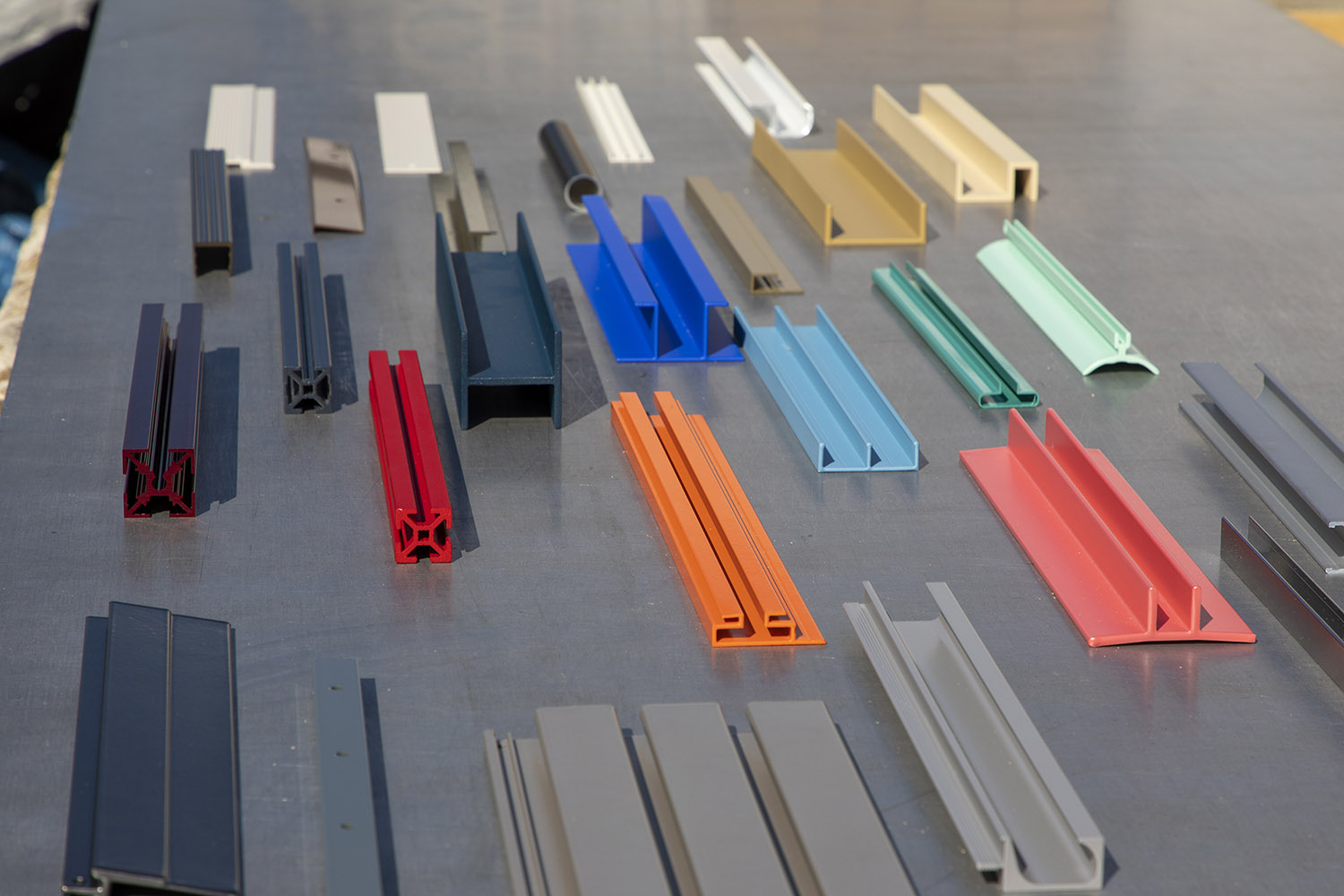Types of Aluminum Channels and Their Uses

Whatever your project, you can use a wide variety of aluminum channel types to secure or mount your materials. From structural applications to organizational aesthetics, choosing the right shape is merely a matter of knowing their use cases.
To that end, our quick guide will provide everything you need to know to select the right aluminum channel and get started on your project.
Angle Aluminum
Angle aluminum is more of a "partial channel," as it lacks a third side. Still, it provides a great introduction to channels, as these pieces suit myriad structural and finish applications.
This profile gets its name for being shaped like a capital "L" and is generally extruded that way or made by folding a flat bar. The "legs" can be the same length ("even") or uneven.
You can also choose sharp corners or rounded options. Angles that are rounded on the outside are often preferred for a softer (and safer) appearance, and angles rounded on the inside help fill gaps at the corner. These choices are often aesthetic, but some situations (covered below) will help you decide which to choose.
Different projects that may use angle aluminum include:
- Structural – Angle aluminum is commonly used to mate two surfaces or building materials together when they meet at a 90o angle (e.g., plywood). It provides extra purchase area compared to affixing them directly, creating a more secure structure. Depending on your material's size and other considerations (like weight), this is one of the applications where using uneven legs may be the preferred choice.
- Shelving and organization – Although Z bars and clips are more suited for hanging items, you can quickly build free-standing shelving using angle aluminum. They make for sturdy legs, and additional angle pieces can support each shelf.
- Trim – When it comes to finished appearances and aesthetics, angle aluminum is most commonly used as a corner cap to cover rough or unfinished edges. For example, you might find the exterior corners of a structure to be finished with angle aluminum over its siding or panels to achieve a clean, straight appearance. Angle aluminum used as edge trim on items should generally feature rounded corners to prevent sharp safety hazards.
U Channels
As their name suggests, U channels have a profile shaped like the letter “U” (or a horseshoe). This makes them suited for various applications, including:
- Framing – Similar to angle use cases, you may use a U channel for framing and other structural purposes to affix materials at right angles and ensure they remain locked in place.
- Tracks and slides – U channels provide a simple guide to help sliding items like drawers and doors move as they should without becoming misaligned.
- Protective edges – Angle aluminum is good for protecting materials attached at right angles, but if there are three sides to cover, you’ll want to consider U channels instead.
Different U profiles may offer variations within the channel for different purposes, but they all maintain the same horseshoe shape. More complex iterations will require the profile to be extruded, as folding a flat bar can only create a simple U.
J Channels
J channels could be considered a subtype of U channels, but they feature a shorter leg on one side to minimize the project’s finished appearance. They're mostly used when trimming around an existing obstacle to guide installation and ensure a uniform edge.
For example, you would use J channels when installing the exterior siding for a house to work around windows and doors. The channel's open side would face away from the window or door, and the end of the siding would be placed inside it.
T-Slot Tracks (or T-Slot Channels)
T-slot tracks (sometimes called T-slot channels or aluminum C channels) are used in place of U channels when adjustable things must also be locked in place. With a U channel, you can easily remove items by pulling them from the channel, so they’re ill-suited for hanging purposes.
Conversely, with any of the numerous T-slot shapes, you must slide the items all the way to the end to free them. This is because of the small edges that curl around the channel’s open side.
The hardware for T-slot tracks also usually features the ability to be locked down manually with knobs, making them particularly suited for applications like table saws and other tools, track lighting, and other ceiling fixtures.
Because of their complex profiles, T-slot tracks must generally be extruded.
Z Shape Channels (or Z bars)
Z shape channels are most often used when mounting or hanging items on the wall. The offset shape (resembling a sideways Z) enables you to quickly and securely hang items with profile-matching Z clips (also known as “French cleats”).
Permanent items–from cabinetry to whiteboards–can be hung with these channels and hardware, but their shape also allows for easy temporary mounting. This is because the hanging item's weight holds them in place.
One Channel for All Your Aluminum Extrusions
If you’re looking to source aluminum extrusions for an upcoming project or for ongoing manufacturing needs, Orange Aluminum is your partner of choice. We provide every channel profile you could need, with numerous variations and customization options to ensure your purchase is perfect for your application.
Contact us today to ask about the extruded aluminum channels in our stock or which specific channel may be right for your project.



